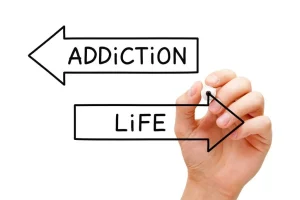Sober living
Cognitive Dissonance Theory TheoryHub Academic theories reviews for research and T&L

The development of the theory was needed to help understand how the fairness of exchange between an employer and employee is formed and propose ways to regulate the outcome of relations. On the one hand, the theory had commercial importance for organisations in terms of reducing financial consequences resulting from the negative behaviour of employees. On the other hand, the research had social importance, in terms of promoting social justice (Adams, 1963; Adams & Freedman, 1976).

Equity Ratios and Attribution of Outcomes
An improvement of brand communication can be achieved with a single improvement of any of its dimensions comprising “advertising, sponsorship-public relations, or social media”. The literature has previously based consumer satisfaction on indicators and constructs assessed and measured with scales from Dwivedi (2015) and Rambocas et al. (2018). The parameters and measures representing the dependent and independent variables are quantified from some randomly selected observations and from the ranking and scaling as highlighted. The measures adopted include; brand awareness, advertisement, preferences & brands, image & brand attractiveness, ‘CSR, responses, cognition and perceptions.
Can Equity Theory explain why some people are more satisfied in their relationships than others?
Indeed, they imply that individuals can consciously and accurately assess and report their emotions. For instance, even when referring to the same scale, scholars use different methods of scoring, different instructions, and even different sets of items. This absence of standard rules favors HARKing (Kerr, 1998) in the choice of cognitive dissonance addiction indicators for CDS. The authors declare that the research was conducted in the absence of any commercial or financial relationships that could be construed as a potential conflict of interest. Participants were informed of the general purpose of the study and gave written consent, in line with the WMA declaration of Helsinki.
Equity and Justice in Social Behavior
- The causal schema for a high outcome for A may be depicted in the more familiar form of a compensatory cause schema (Kelley, 1972, 1973), where two quantitatively graded causes contribute to the effect (Figure Figure22).
- These align with the research findings, research questions as presented and the scope of the investigation and research.
- In our view, avoiding a confusing conceptualization of CDT requires specifying that the regulation strategy aims at CDS and not necessarily directly at the inconsistency.
- If you’re inspired to cultivate a workplace where everyone feels they belong and are valued, where work feels like play because your team feels like home, then it’s time to take the next step.
- Otherwise, the situation might not even be perceived as exchange, as outcomes will not be attributed to inputs of other individuals.
Equitable treatment fosters a positive work environment where employees feel valued and respected, leading to increased productivity and commitment. Research studies have consistently shown that organizations that prioritize fairness and equity experience lower turnover rates, greater employee loyalty, and enhanced performance across all levels. Equity theory sheds light on the dynamics of friendships by examining how the exchange of benefits and costs, perceived fairness, and social interactions influence the quality and longevity of friendships. Equity theory suggests that individuals strive to maintain a balance between what they invest in a relationship and what they receive in return. When equity is achieved, couples tend to experience higher levels of contentment and fulfillment. Challenges may arise when gender roles or cultural expectations influence each partner’s contributions and expectations.


In this case, the rational solution is not where both players defect, for that outcome will result in their death; the rational solution is where one player swerves (or “cooperates”) and the other drives straight (or “defects”). Assurance, otherwise known as stag hunt, trust dilemma or cooperation game, is not a real dilemma at all. All parties prefer to cooperate and hunt a stag but the possibility that someone might defect does not make catching the stag a certainty. In this case, lack of trust or miscommunication might make someone hunt a hare (i.e., “defect”) than hunt the stag (i.e., “cooperate”). The causal schema for a high outcome for A may be depicted in the more familiar form of a compensatory cause schema (Kelley, 1972, 1973), where two quantitatively graded causes contribute to the effect (Figure Figure22).
- Hence, members of the group will reward fellow members, who treat others equitably and punish those who treat others inequitably (Walster, Berscheid & Walster, 1973).
- In the cases of high or medium input of B, one cannot easily infer the extent that the input of A contributed to the final high outcome (indicated by the dotted arrows).
- Investigations of CDT in social neuroscience (e.g., van Veen et al., 2009; Harmon-Jones et al., 2015; Izuma and Murayama, 2019) also show similitudes in the activated areas with other theories.
- A review of cognitive dissonance theory at the organisation level was also conducted to integrate the relevant knowledge that was published from 2000 to 2016 (Hinojosa et al., 2017).
- The existence of dissonance and the mechanisms that humans used to cope with it captured Festinger’s interest in developing cognitive dissonance theory.
However, the countries with a collectivist culture can also vary by the degree of distributive fairness perception, as suggested by a study exploring comparison strategies and the evaluation of rewards/inputs by employees in China, Japan and South Korea (Kim, Edwards & Shapiro, 2015). Japanese workers perceive overpayment to be unfair, in contrast to Chinese and South Korean employees, which can be explained by the stronger materialism ideology embedded in the social system of the latter two countries (Kim, Edwards & Shapiro, 2015). Mixed findings of fairness perception make it possible to conclude that it is not a universal concept, as it is largely moderated by cultural and ideological differences (Lund, Scheer & Kozlenkova, 2013; Bolton, Keh & Alba, 2010; Kim, Edwards & Shapiro, 2015). Equity Theory was introduced by John Stacey Adams in 1963 (Adams, 1963), originally, for application in the organisational context. The theory was developed against the lack of theoretical explanation of the psychological basis of inequity perception (Adams, 1963).
From Insight to Impact: Our Success Stories
- The results are consistent with the extant and available literature that found a positive connection, association, or relation between brand reputation and brand equity (Stanwick P & Stanwick S, 2003; Arzham & Ahmad, 2020).
- Thus, this position does not imply avoiding measuring regulation, but stresses the necessity of assessing the CDS.
- When considering organizational psychology in the context of equity theory, it becomes evident that it may not fully capture the multifaceted dynamics of workplace interactions.
- This intellectual tradition proposed that people navigated the world by motivational pushes and pulls, and therefore our behaviours were driven by psychological forces.
- However, science should not concern itself with the gracefulness of a theory but only about the solidity of the evidence supporting it and its own falsifiability.
Moreover, in the present state of conceptualization, assessing the inconsistency may also be the most relevant way to assess the “dissonance” construct. As a consequence, resolving the issue of the relation between inconsistency and the CDS could be achieved by using conditions that involve several degrees of inconsistency (e.g., low; medium; high), assessing it, and by measuring the CDS generated by these different conditions. Refining the terminology used in CDT could not only clarify the theory, but also impact the whole conception of the theory regarding ways to cope with “dissonance” (Vaidis and Bran, 2018). In Festinger’s view (1957), regulation strategies are supposed to reduce “dissonance,” but does that mean resolving the inconsistency or does that mean alleviating the arousal? This issue is never clarified in the original presentation of the theory, and differences in scholars’ implicit definitions could result in radically different views about the nature of dissonance regulation. In our view, avoiding a confusing conceptualization of CDT requires specifying that the regulation strategy aims at CDS and not necessarily directly at the inconsistency.
Qualitative results on consumer’s perception: “Themes & Analysis”
However, a broader understanding is required to understand the role that equity plays in staff performance, who play an important role in the lives and well-being of those with intellectual disabilities. Equity theory can be used beyond the scope of traditional businesses to consider a broad range of staff outcomes including stress, burnout, turnover, behavior, performance, and satisfaction. In this case, while there is no inequity as defined by Adams, employees may be unsatisfied with the organization. Consumers are dominant players that should be considered and prioritized as key and vital stakeholders by firms, companies, and organizations. Businesses that are believed, and known or portrayed to be socially responsible attract high level of customer’s trust (Hu et al., 2020). When successfully achieved, ‘CSR activities positively affect consumer satisfaction (Agyei et al. 2021; Mohammed and Rashid 2018).

chapter 5 – Equity in Attitude Formation and Change
Collectively, the methodological issues concerning assessment in CDT invite consideration of the examination of regulation as a secondary goal for now. As a first step, it seems essential to direct efforts at the development of a clear instrument for measuring the CDS before expecting a clear relation with regulation. About twenty-six centuries before our time, Sun Tzu’s philosophy stated that “If you know the enemy and know yourself, you need not fear the result of a hundred battles.” Knowledge of weaknesses is just as important as awareness of strengths. Similarly, scientists should be alert to methodological flaws surrounding their models so as to confront empirical challenges serenely. Participants gave written consent after being informed of the general purpose of the study, in line with the WMA declaration of Helsinki. As in Study 1, no deception was employed and minimal emotional involvement on the part of participants was expected.
